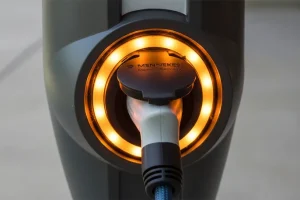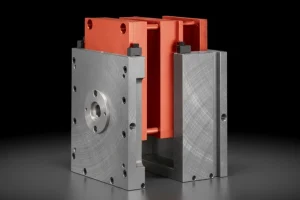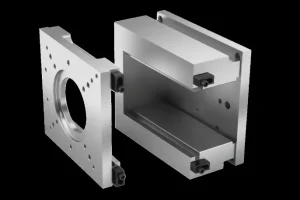Introduction
Metal Injection Molding (MIM) process is a revolutionary manufacturing process that has transformed the way intricate metal components are produced. With its roots in plastic injection molding, MIM marries the versatility of plastics with the durability and strength of metals, offering a game-changing solution for a wide range of industries. In this article, we will embark on a journey to explore the world of Metal Injection Molding, its significance in modern manufacturing, and its extensive applications that have left an indelible mark across numerous sectors.

The Importance and Widespread Applications of MIM
The importance of MIM cannot be overstated. It has paved the way for the creation of complex metal parts and components that were once deemed unattainable or prohibitively expensive through traditional manufacturing methods. The significance of MIM lies in its ability to:
- Enable Complex Geometries: MIM can produce highly intricate shapes and fine details, pushing the boundaries of what’s achievable in metal manufacturing.
- Offer Cost-Effectiveness: In many cases, MIM is more cost-effective than conventional machining techniques, especially for small to medium-sized components.
- Support Various Materials: MIM is not limited to a single material; it accommodates a wide range, including stainless steels, titanium alloys, and more.
- Ensure High Precision: MIM offers tight tolerances and outstanding dimensional accuracy, critical for industries that demand precision.
- Cater to Diverse Industries: From medical and automotive to aerospace and electronics, MIM has found applications in an array of sectors, demonstrating its versatility and adaptability.
As we delve deeper into the intricacies of Metal Injection Molding, we will unravel the process, principles, and future trends that make it a driving force in modern manufacturing. So, fasten your seatbelts as we journey into the world of MIM, where innovation and precision converge to shape the future of metal production.
II. What is Metal Injection Molding (MIM)?
Defining MIM and Its Significance
Metal Injection Molding (MIM) is a cutting-edge manufacturing process that blends the principles of plastic injection molding with the robustness of metal, revolutionizing the way intricate metal components are fabricated. It’s a technique that has gained immense significance in modern manufacturing due to its unparalleled ability to create complex metal parts with precision, all while offering cost-effectiveness.

At its core, MIM involves the formation of metal components through a meticulously controlled process that includes the injection of metal powders combined with thermoplastic binders into specialized molds. This mixture, referred to as the feedstock, is then subjected to high pressure and temperature, enabling it to take the desired shape.
Highlighting the Key Elements: Metal Powders and Thermoplastic Binders
Two primary elements form the backbone of Metal Injection Molding: metal powders and thermoplastic binders. These elements play a crucial role in the MIM process:
- Metal Powders: These are finely powdered forms of metals, ranging from stainless steels and titanium alloys to even precious metals. The choice of metal powder determines the final properties and characteristics of the MIM component.
- Thermoplastic Binders: These are binders that have a unique property of softening when heated and solidifying when cooled. They are mixed with metal powders to create a feedstock with the consistency of toothpaste, facilitating the injection molding process.
The synergy between these key elements allows MIM to achieve remarkable precision, making it an indispensable manufacturing technique across a spectrum of industries. As we delve further into the MIM process, we will uncover how these elements come together to produce intricate metal components that were once considered unattainable through traditional manufacturing methods.
III. The MIM Process
The Metal Injection Molding (MIM) process is a meticulously orchestrated sequence of steps that transforms metal powders and thermoplastic binders into intricate metal components. Let’s delve into the intricacies of each step and understand their pivotal roles in crafting these complex pieces.

1. Feedstock Preparation
The MIM journey commences with feedstock preparation, a step crucial to the entire process. Here’s what happens:
- Metal Powders Selection: Careful selection of the appropriate metal powders is paramount. The choice dictates the physical properties, mechanical characteristics, and even the final appearance of the component.
- Binder Integration: The selected metal powders are mixed with thermoplastic binders to form a homogeneous blend. This mixture, with a toothpaste-like consistency, is what we call the feedstock. The binders serve as temporary carriers for the metal powders throughout the process.
2. Injection Molding
Once the feedstock is ready, the next phase is injection molding, a process borrowed from plastic injection molding. Here’s what happens during this step:
- Mold Cavity Filling: The feedstock is introduced into the mold cavity using an injection molding machine. The high pressure and temperature conditions facilitate the material’s flow into even the tiniest intricacies of the mold.
- Shape Formation: Inside the mold, the feedstock takes on the shape of the desired component. This step is instrumental in creating the complex geometries and intricate features that MIM is renowned for.
3. Debinding and Sintering Processes
Following injection molding, the components undergo debinding and sintering processes that are indispensable for solidifying the metal. Here’s how it works:
- Debinding: In this stage, the molded parts undergo a binder removal process. Heat is applied to break down and eliminate the thermoplastic binders, leaving behind a green part with metal powder particles.
- Sintering: The green parts then enter the sintering phase. High temperatures cause the metal powder particles to fuse together, transforming the green part into a dense, solid metal component. This process imparts the desired mechanical properties and strength.

4. Finishing
The final touch is the finishing phase, where post-processing steps are undertaken to meet specific requirements:
- Machining: For precision and fine-tuning, machining processes such as milling or grinding may be applied to achieve the exact dimensions and tolerances.
- Surface Treatments: Depending on the application, surface treatments like polishing, coating, or heat treatments can enhance the component’s performance and appearance.
Each of these steps in the MIM process plays a pivotal role in crafting intricate metal components with unparalleled precision and complexity. The marriage of metal powders and thermoplastic binders, along with the meticulous control of temperature and pressure, makes MIM a powerful and versatile manufacturing technique, offering solutions across diverse industries.
IV. Can You Do Injection Molding with Metal?
The answer is a resounding yes! Metal Injection Molding (MIM) stands as a testament to the adaptability of injection molding techniques to metals, offering a world of possibilities in metal component manufacturing. Here, we’ll clarify how MIM brings the precision and complexity of injection molding to the world of metals.
Adaptability of Injection Molding to Metals
Traditionally, metal injection molding process was primarily associated with plastics, as molding molten metal presented numerous challenges. However, with the advent of Metal Injection Molding, those challenges have been successfully overcome. MIM has redefined the landscape by demonstrating that metals, too, can be subjected to the injection molding process. Here’s how it works:
- Fine Metal Powders: The key to this adaptation lies in the use of finely powdered metal particles. These particles are combined with thermoplastic binders to create a feedstock with a consistency that mimics toothpaste. The small particle size and binder integration enable the material to flow smoothly into the intricate features of the mold.
- Controlled Conditions: MIM relies on highly controlled conditions of temperature and pressure within the injection molding machine. This control ensures that the metal powders and binders effectively fill the mold cavity, shaping the component with precision.
Emphasizing Precision and Complexity
MIM brings a level of precision and complexity to metal component manufacturing that was once considered unattainable. Here’s why:
- Complex Geometries: The adaptability of MIM allows for the creation of components with intricate and complex geometries. It’s not just about simple shapes; it’s about crafting parts with fine details and intricate features that meet the most demanding design specifications.
- Tight Tolerances: MIM offers the capability to achieve extremely tight tolerances and excellent dimensional accuracy. This level of precision is critical for industries where every micron matters.
- Diverse Materials: MIM is not limited to a single metal; it accommodates a wide range of materials, including stainless steels, titanium alloys, and even precious metals. This diversity allows for the creation of components with a broad spectrum of properties and characteristics.
In conclusion, Metal Injection Molding showcases the remarkable adaptability of injection molding techniques to metals. It has shattered the boundaries of what’s possible in metal component manufacturing, offering precision and complexity that rivals and often surpasses traditional machining methods. MIM is not just a process; it’s a testament to the endless possibilities when innovation and technology converge.
V. What You Need to Know About Injection Molding
To truly grasp the significance of Metal Injection Molding (MIM), it’s essential to explore the fundamentals of injection molding, a technique that forms the foundation for both plastic and metal manufacturing. In this section, we’ll delve into the basics of metal injection molding combines and highlight the common principles that bridge the gap between these two processes.
Exploring the Basics of Injection Molding
Injection molding, in its essence, is a manufacturing process used to create a vast array of products by injecting molten material into a mold cavity. While it’s most commonly associated with plastics, the adaptation of this technique to metals has given rise to MIM. Here’s how injection molding works, whether it’s for plastic or metal:

- Mold Cavity: The process begins with a mold cavity, a carefully designed and machined hollow space that defines the shape and dimensions of the desired component.
- Material Melting: In plastic injection molding, thermoplastic pellets are melted and injected into the mold cavity. In MIM, finely powdered metal and thermoplastic binders are used to create a feedstock.
- Injection: The molten material or feedstock is injected into the mold cavity with high pressure. In plastic injection molding, it flows and takes the shape of the mold. In MIM, the feedstock fills every crevice of the mold, capturing intricate features and geometries.
- Cooling: After injection, the material is allowed to cool and solidify within the mold cavity. In plastic molding, this solidifies the plastic into the final shape. In MIM, this initiates the process of binding the metal particles.
- Ejection: Once the material has sufficiently cooled and solidified, the mold opens, and the newly formed component is ejected.
Highlighting Common Principles
Despite the differences in materials and some specific intricacies, injection molding, whether for plastic or metal, shares several common principles:
- Mold Design: Both processes rely on the careful design and precision machining of molds. The mold dictates the final shape, features, and tolerances of the component.
- Material Flow: Injection molding, be it plastic or metal, is about precisely controlling the flow of the molten material or feedstock into the mold cavity. This control ensures that the material accurately takes on the mold’s shape.
- Cooling and Solidification: In both plastic and metal injection molding, the cooling and solidification of the material are critical steps. This phase determines the final form and properties of the component.
- Mold Opening and Ejection: Once the material has solidified, the mold opens, and the component is ejected. This step is a common denominator in injection molding processes.
Understanding these shared principles between plastic and metal injection molding underscores the adaptability and versatility of metal injection molding materials and techniques. It highlights how a fundamental concept can be tailored to accommodate different materials, unlocking a world of possibilities in manufacturing, from intricate plastic components to complex metal parts crafted through MIM.
VI. The Principle of Metal Injection Molding
Understanding the principle behind Metal Injection Molding (MIM) is essential to grasp the magic that transforms metal powders into intricate components. In the final part of this section, we’ll delve into the fundamental principle of MIM and detail how metal powder particles and binder materials come together to create a versatile feedstock.
Explaining the Fundamental Principle
At its core, the principle of MIM revolves around the ingenious combination of finely powdered metal particles and thermoplastic binders. The goal is to craft a feedstock that seamlessly merges the qualities of metals with the process capabilities of injection molding. Here’s a breakdown of the fundamental principle:
- Metal Powder Selection: MIM begins with the selection of metal powders tailored to the desired properties of the final component. These powders can range from stainless steels to exotic alloys, each bringing its unique characteristics to the table.
- Binder Integration: The selected metal powders are then meticulously mixed with thermoplastic binders. These binders possess a remarkable property: they soften when heated and solidify when cooled. This feature is crucial for the MIM process. As the binders soften during heating, they help the metal powders stick together, facilitating the molding phase. Once cooled, the binders harden, holding the metal particles in place.
Creating the Versatile Feedstock
The magic of MIM hinges on the creation of a versatile feedstock that seamlessly combines metal powders and binders. Here’s how it’s achieved:
- Homogeneous Blending: The metal powders and binders are mixed together thoroughly to ensure a homogenous blend. This ensures that each metal particle is evenly coated with the binder material.
- Consistency: The resulting mixture possesses a consistency similar to toothpaste. This toothpaste-like feedstock is pliable and capable of filling the mold cavity during the injection phase.
- Flow and Precision: During injection, the feedstock flows smoothly into the mold, capturing even the tiniest intricacies and complex geometries. The binders play a crucial role in maintaining the precision and intricacy of the final component.

As the feedstock is injected into the mold cavity, the metal powders retain their affinity for one another due to the binder material. This allows them to fuse together during the subsequent debinding and the sintering process phases, culminating in a dense, solid metal component.
In essence, the principle of Metal Injection Molding harnesses the synergy between metal powders and thermoplastic binders to create a feedstock capable of achieving extraordinary precision and complexity. This feedstock, when subjected to the controlled conditions of injection molding, produces intricate metal components with remarkable mechanical properties and versatility.
VII. Applications of MIM
The versatility of Metal Injection Molding (MIM) is exemplified through its wide-ranging applications across diverse industries. In this section, we’ll showcase how MIM has left an indelible mark in various sectors, highlighting specific examples from the medical, automotive, aerospace, electronics, and firearms industries.

1. Medical Applications
MIM has significantly contributed to the medical field by enabling the production of intricate and biocompatible components. Examples include:
- Surgical Instruments: MIM is used to craft precise surgical instruments such as forceps, scissors, and needle holders, ensuring reliability and accuracy in critical procedures.
- Dental Components: In the dental industry, MIM produces dental brackets, implants, and orthodontic appliances with complex geometries that fit comfortably in the mouth.
- Orthopedic Implants: MIM is instrumental in creating orthopedic implants like hip and knee joint replacements, offering strength, durability, and biocompatibility.
2. Automotive Applications
The automotive sector benefits from MIM in producing components that require high precision and durability:
- Gears: MIM is used to manufacture gears in automatic transmissions, ensuring smooth and efficient power transfer.
- Connectors: Complex connectors for vehicle electronics and control systems are crafted using MIM for their precision and reliability.
- Fuel Injection Components: MIM produces fuel injector nozzles and pump components that withstand high-pressure and temperature conditions.

3. Aerospace Applications
In aerospace, where precision and performance are paramount, MIM plays a crucial role:
- Complex Engine Parts: MIM is employed to create intricate engine components such as turbine blades, brackets, and housings with lightweight and high-strength properties.
- Sensor Housings: Precise sensor housings for aircraft systems are produced using MIM, ensuring accuracy in data collection.
4. Electronics Applications
In the electronics industry, MIM is employed to create small and intricate metal components:
- Consumer Electronics: MIM produces tiny, complex components for devices like smartphones, tablets, and laptops, ensuring high performance and reliability.
- Connectors: High-precision connectors in electronic devices rely on MIM for their intricate designs and durability.
5. Firearms Applications
In the firearms industry, MIM is utilized for crafting critical components:
- Firearm Components: MIM is employed to create firearm components such as triggers, hammers, and other precision parts, ensuring consistent and reliable performance.
The applications of MIM extend beyond these sectors, encompassing areas such as watchmaking, aerospace, and more. The versatility of MIM, coupled with its ability to produce intricate components with exceptional mechanical properties, makes it an indispensable choice across industries where precision, complexity, and reliability are paramount. As technology continues to advance, the horizon of MIM applications is likely to expand, further solidifying its position as a game-changing manufacturing technique.
VIII. Future Trends
As Metal Injection Molding (MIM) continues to evolve and mature, it’s important to explore the ongoing advancements and future prospects of this innovative manufacturing technique. In this section, we’ll delve into the exciting developments in MIM and the potential innovations on the horizon.
Ongoing Advancements in MIM
- Material Advancements: Researchers are continually expanding the range of materials compatible with MIM. This includes not only new metal alloys but also improvements in binder materials, enabling enhanced performance and durability.
- Production Efficiency: Efforts are underway to optimize various aspects of the MIM process, from feedstock preparation to injection molding and post-processing. Improved efficiency means reduced production costs and faster turnaround times.
- Precision and Tolerances: MIM is pushing the boundaries of precision. Advances in tooling and molding techniques are allowing for even tighter tolerances and finer details, expanding the scope of potential applications.
- Mechanical Properties: Researchers are focused on enhancing the mechanical properties of MIM components, including increased strength, durability, and corrosion resistance. This makes MIM components even more suitable for critical applications.

Future Prospects and Potential Innovations
- Customization: MIM is poised to offer greater customization. Tailoring components to specific requirements, whether in terms of material properties or geometries, will become more accessible, opening doors to unique applications.
- Miniaturization: The demand for smaller, more intricate components in electronics and medical devices is growing. MIM is likely to play a pivotal role in meeting these demands, producing micro-sized components with precision.
- Sustainability: As environmental concerns continue to rise, MIM may evolve to become more environmentally friendly. Innovations in binder materials that are easier to recycle and reduce waste are a possibility.
- 3D Printing Integration: The integration of 3D printing and MIM could lead to hybrid manufacturing processes, allowing for the creation of complex metal components with even more efficiency and precision.
- Advanced Simulation: Simulation tools will become more sophisticated, allowing for precise modeling of the MIM process. This will aid in predicting outcomes, optimizing designs, and reducing trial and error in manufacturing.
- Materials Innovation: Advances in material science will introduce new possibilities for MIM, including the use of novel materials with unique properties and applications.
- Reduced Costs: As MIM technology becomes more widespread and mature, it’s likely that costs associated with equipment, materials, and production will decrease, making MIM an even more attractive option for a broader range of industries.
- Quality Control: Quality control processes will become increasingly automated and sophisticated, ensuring that MIM components consistently meet stringent quality standards.
In conclusion, Metal Injection Molding is on a trajectory of continuous improvement and expansion. It is not merely a manufacturing process but a field of innovation that holds immense promise for the future. As researchers and engineers push the boundaries of what’s possible with MIM, we can anticipate groundbreaking developments that will reshape industries, introduce new applications, and enhance the precision and performance of metal components. MIM is, without a doubt, a technology to watch as it paves the way for the next generation of manufacturing.

Conclusion
In summary, Metal Injection Molding (MIM) stands as a transformative force in modern manufacturing, offering a revolutionary approach to crafting intricate metal components. Let’s reinforce the key takeaways and underscore the significance of MIM:
- Versatility and Precision: MIM showcases remarkable adaptability by combining finely powdered metal particles and thermoplastic binders to create a versatile feedstock. This feedstock, when subjected to controlled conditions, yields components with exceptional precision and complexity.
- Applications Across Industries: MIM has found its way into diverse sectors, including medical, automotive, aerospace, electronics, and firearms. Its ability to meet stringent requirements for precision, strength, and reliability has solidified its importance in these industries.
- Materials Innovation: The continual expansion of materials compatible with MIM opens doors to new possibilities. From stainless steels to exotic alloys, MIM offers a wide range of material choices, allowing for tailored solutions.
- Future Potential: The future of MIM holds exciting prospects. Ongoing advancements in materials, production efficiency, and mechanical properties promise even greater customization, miniaturization, and sustainability. MIM is at the forefront of shaping the manufacturing landscape.
- Cost-Effectiveness: MIM is not just about precision; it’s also cost-effective, especially for small to medium-sized components. Its ability to reduce material waste and minimize the need for extensive machining contributes to its economic advantages.
- Environmental Considerations: With a focus on sustainability, innovations in binder materials and recycling processes are on the horizon, aligning MIM with eco-friendly manufacturing practices.
In conclusion, Metal Injection Molding is not merely a manufacturing process; it’s a testament to human ingenuity and innovation. Its significance in modern manufacturing cannot be overstated, as it bridges the gap between precision and complexity, offering a cost-effective and versatile solution for crafting intricate metal components. As technology advances and new frontiers are explored, MIM is poised to play a pivotal role in shaping the future of manufacturing, offering unprecedented precision, efficiency, and material versatility while minimizing environmental impact. The journey of MIM is a testament to the endless possibilities when innovation and technology converge.









